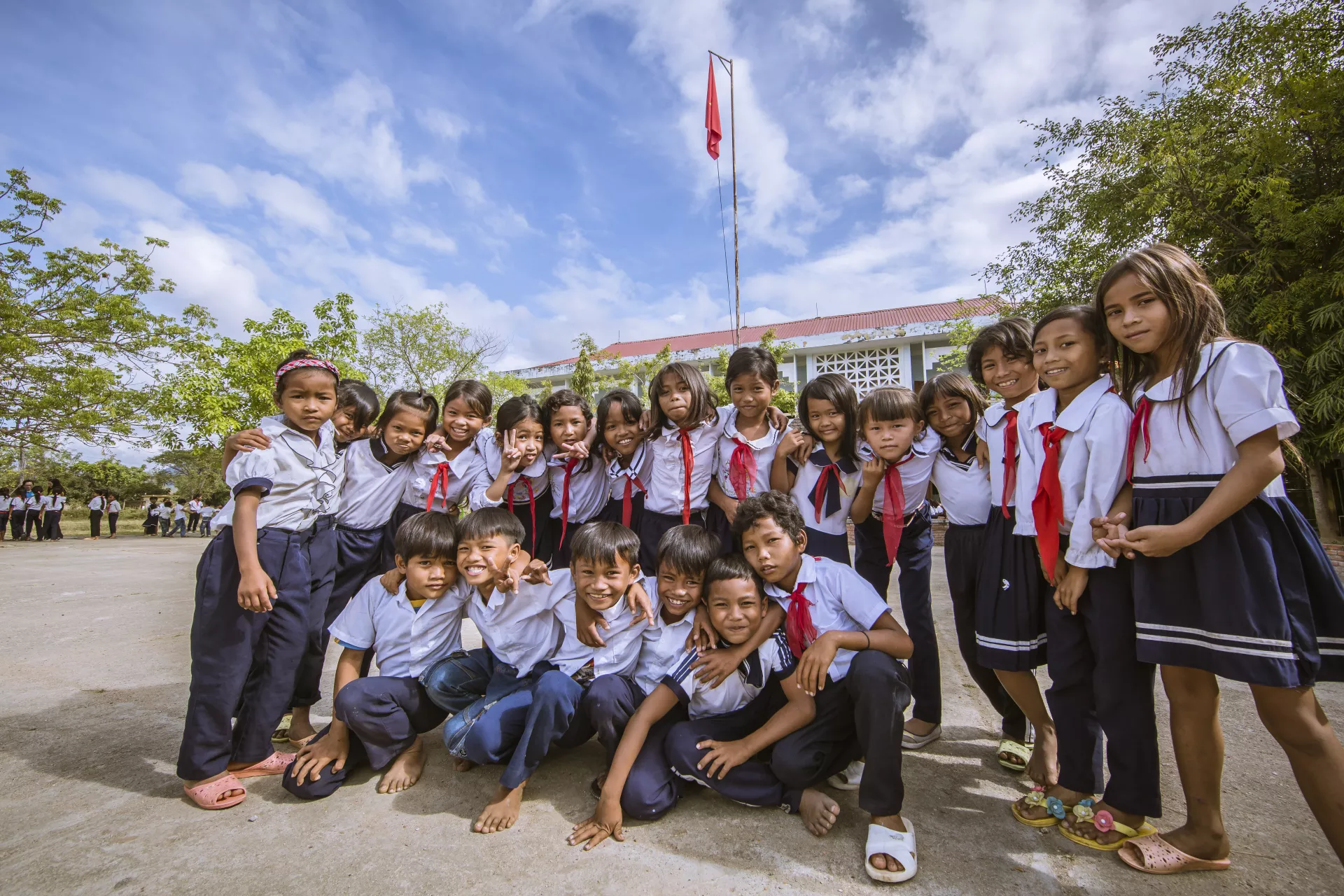Strategies
In Vietnam, we used a holistic, systems-based approach to strengthen local child protection systems (CPS) at all levels. This comprehensive strategy helped to improve the screening, identification and reporting of children at high risk of child labour, and to provide timely assistance to child labourers.
Save the Children took the lead in implementing project activities directly with children, families and local authorities. Similarly, the Centre for Child Rights and Business Vietnam has focused its efforts on the business sector and factories, working directly with workers to promote responsible business practices and prevent child labour.
The Centre (for Child Rights and Business) has engaged with supply chains through capacity building, technical advice and field advisory activities. This targeted approach has enabled us to reach a wider range of stakeholders, from grassroots communities to the private sector.
Meanwhile, UNICEF has played a crucial role in high-level advocacy at the central level, working with government agencies to develop new policies, guidelines and legal frameworks that strengthen the protection of children’s rights, their well-being and the prevention of child labour, and with the Vietnam Chamber of Commerce and Industry (VCCI) to promote children’s rights and business principles.
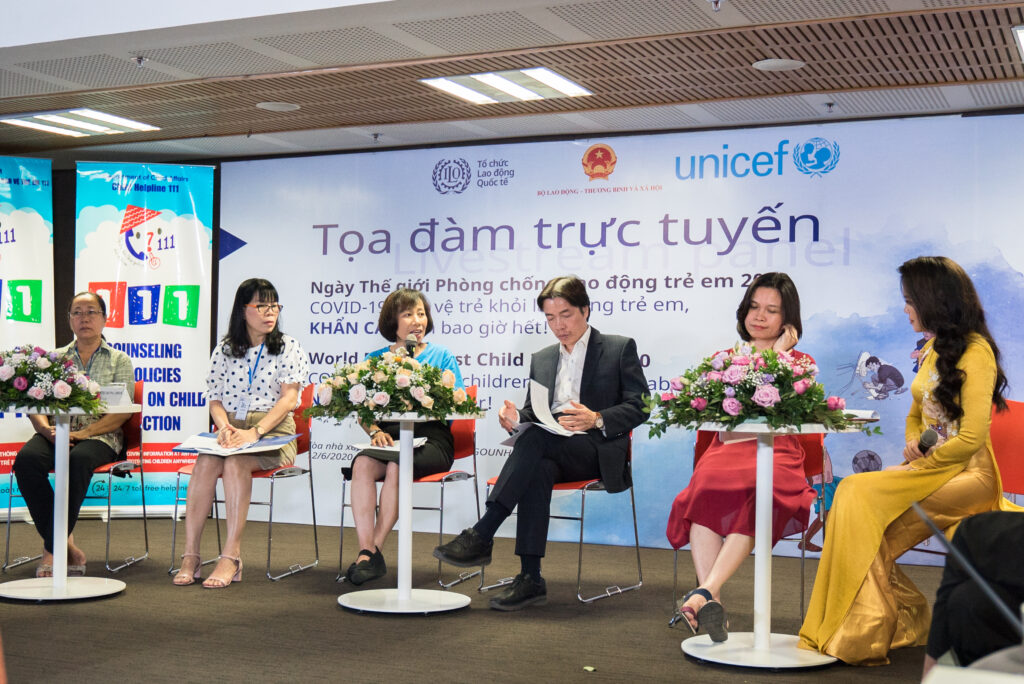
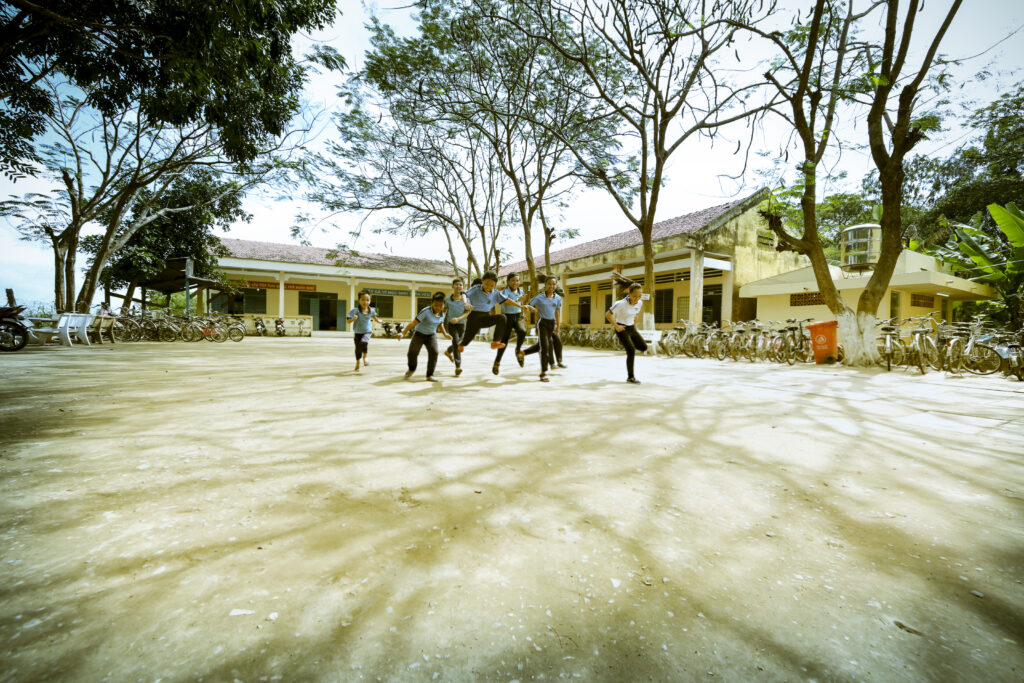
Contributing to improved capacity in child protection: System-based approach
Our systems-based and holistic approach has helped us to develop better policies that look at the child, the family and the community as a whole. This includes better coordination of poverty, social, justice, labour and education policies. A systems approach also tackles social exclusion. It addresses issues such as discrimination based on origin, ethnicity, gender or other characteristics. We aimed to build stronger child protection systems in Vietnam at all levels – from individuals in communities to the government – to ensure long-term and sustainable solutions to child labour.
For example, to engage and empower local child protection officers and volunteers, we supported their training. We focused on increasing their knowledge of how to differentiate and identify child labour and hazardous work, and trained them in case management. We also worked with local community-based organisations to improve their outreach and support to the most vulnerable and hard-to-reach children, particularly street, out-of-school and working children. We also trained teachers in life skills, counselling and positive discipline methods.
To raise awareness in communities, we have conducted awareness-raising initiatives for parents, teachers, child protection committee members, volunteers and children about children’s rights, particularly the harmful effects of child labour and the right to education. Our partners have also supported vulnerable families to improve their livelihoods.
To further empower women, we have provided training in business start-up and financial management to women and Women Union members. These skills have helped vulnerable families and children access income generation and social welfare programmes, including microcredit, livelihood and vocational training programmes.
To promote youth empowerment, our partners provided training packages on employability skills and organised a series of training/mentoring sessions for vulnerable youth to support their access to decent work. We also supported child labourers and at-risk children to return to school or vocational training. This process has been documented to inform our future policy advocacy.
Addressing the Covid-19 impact
During the implementation of the Work: No Child’s Business programme, the global Covid-19 pandemic severely affected communities around the world. In Vietnam, the impact of the pandemic led to an increase in child labour. In addition to our systems-based approach, our partners responded to the impact of the pandemic by providing emergency relief to the most affected provinces.
In 2020 and 2021, Ho Chi Minh City and Dong Thap provinces were among the hardest hit, and the challenges posed by Covid-19 were significant.
To address and manage the negative impact and urgent needs of the pandemic, our partners worked closely together and supported the government in innovative ways. We paid particular attention to the changing needs of local communities, especially vulnerable groups, and the priorities of the local government during and after the outbreak. When education went online, many children from poor families could not afford a device or the internet, while their parents lost their jobs. This disrupted the children’s education. So we gave money (direct cash transfers) to the families of disadvantaged children at risk of dropping out of school and entering child labour. We also gave children tablets and school supplies so they could continue their studies during the school closures, relieving a financial burden and preventing them from dropping out of school and working.
Improving access to (quality) education
The education system is an important ally of the child protection system,” says Yen Pham Thi Hai of UNICEF. “If children are not in school, the risk of child labour becomes high. But until now, this link has not been made clear enough. Neither for schools nor for government organisations.
To make the link between child labour and (lack of) education more explicit, our strategies have focused on raising awareness, improving access to education and improving the quality of education.
Improving access to education
In our strategy to improve access to education, we have focused on a number of issues, including a family’s financial situation and cultural background. These can be barriers to a child’s access to education. We have therefore worked to strengthen the financial position of families through improved and sustainable livelihood opportunities for parents. This includes the (financial) empowerment of women. A better financial situation for families and women allows children to stop working and gives them the opportunity to go to school.
To improve access to education, we have also worked and advocated for children at the government level. Our programme activities included high-level advocacy and awareness-raising on the issues of school dropout and the elimination of the risk of child labour, as well as advocacy for social and child protection services and welfare programmes. We supported government ministries in developing child protection protocols to guide teachers, school management and children in dealing with exploitation and abuse.
Our work to improve access to education has also included assistance with administrative issues and proper documentation, particularly for children of migrant workers. There are many migrant children in Ho Chi Minh City and the other regions where we work. We have helped with documentation issues such as obtaining birth certificates and temporary household registrations for migrant children, which are required for school enrolment. We have also provided scholarships, emergency assistance and vocational tool kits to ensure school attendance. To physically get the children to school, we have helped with transport (bicycles).
Improving quality of education: towards child friendly learning environments
It is important that children feel comfortable and safe in their learning environment. This has a positive effect on their engagement in learning and other activities. This is why we have created the ‘child-friendly learning environment’ – an environment that motivates students to learn and develop according to their own abilities and strengths. It does not put pressure on grades, keeps students in school and reduces the risk of children missing school or dropping out to go to work.
The child-friendly learning approach has been implemented in our areas in Ho Chi Minh City and is being replicated in other regions of the country. All training methods for creating child-friendly learning environments have been implemented in primary and secondary schools, as well as in vocational training centres, where the risk of dropping out is also high.
Key elements of child-friendly learning environments and this approach are positive discipline, child-led groups, school counselling and school dialogue.
Click here to read in more detail about our work to improve the quality of education, access to education and the child friendly learning environment.
Empowering early school leavers through bridging education and youth employment
Children who have dropped out of school are an easy target for child labour. These children often come from poor families and will work to support the family income. Our aim is to bring these children back into the formal education system, or at least into informal education. If they can get into formal education or training, they will increase their chances of finding decent work later. If they are in informal education, they may be able to re-enter formal education later or join one of the vocational training centres.
We help early school leavers by setting up open houses, talking to parents, working with vocational training centres and offering life skills training.
Open houses are part of the emergency child protection service. It’s the first step in helping children who have dropped out of school. At the open houses, children can attend classes, often run by religious groups. This form of bridging education helps children who want to go back to school but are in a difficult situation. We also talk to the parents of these children about why not going to school is bad for the child’s development. But going back to school after working can be difficult. Children may not be able to keep up with their classmates or may be bullied when they try to return to school. But with greater awareness and support from their parents, family and community, they are more likely to return to school.
Vocational training centres teach children who are not in formal education. Most of these centres have been set up with the support of the Ministry of Labour, Invalids and Social Affairs.
We have developed a curriculum for life skills training, which includes education and training in soft skills. This helps students to find work and a good life.
Click here to read more about open houses and vocational training centers.
Women empowerment and focus on inclusivity
Empowering women is key to ending child labour in communities. We have worked to address the root causes of child labour by tackling gender-based violence, empowering women, supporting vulnerable groups and amplifying children’s voices.
Alternative livelihoods and Income for women
Strengthening the position of women in communities, particularly their financial position, leads to improvements for children in women’s households; when women’s household income, economic conditions and position in the household and community improve, their children are more likely to go to school and continue their education. They are less likely to drop out of school and become involved in child labour.
Our partners have strategically partnered with women’s associations in targeted districts to improve their livelihoods. We helped women in our programme areas with microfinance support, livelihood support, and capacity building in financial management and business start-up planning. For example, we provided women with livelihood support for sugarcane vending machines and microfinance support to develop their businesses. This has had great results.
An important trickle-down effect of these women’s improved financial situation is a reduction in the risk of domestic violence, violence against children and child abuse caused by the stress of financial difficulties.
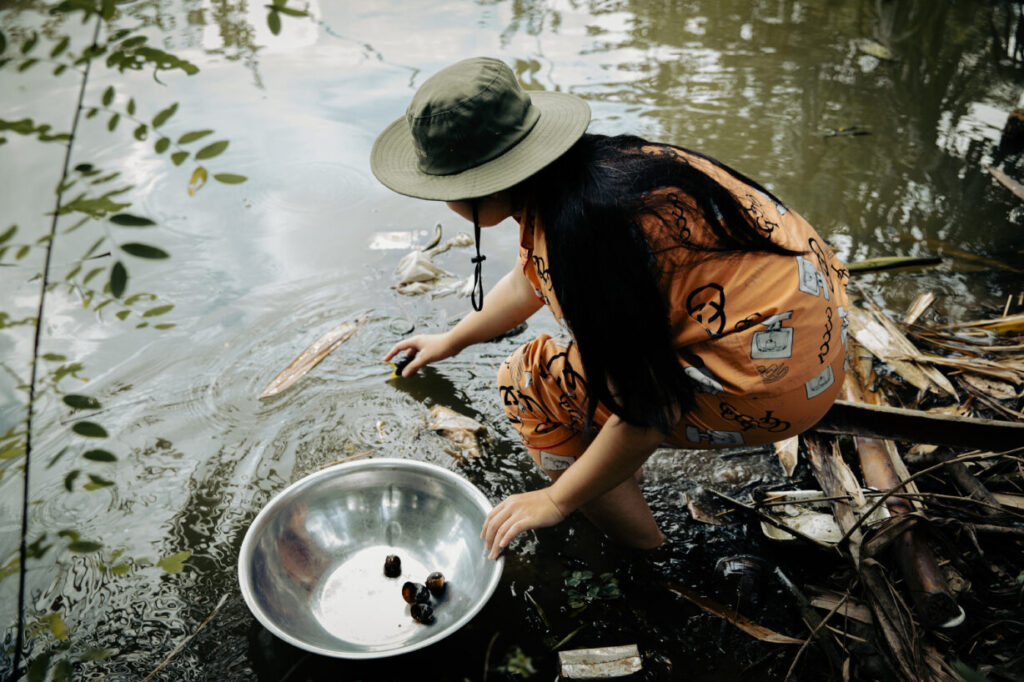
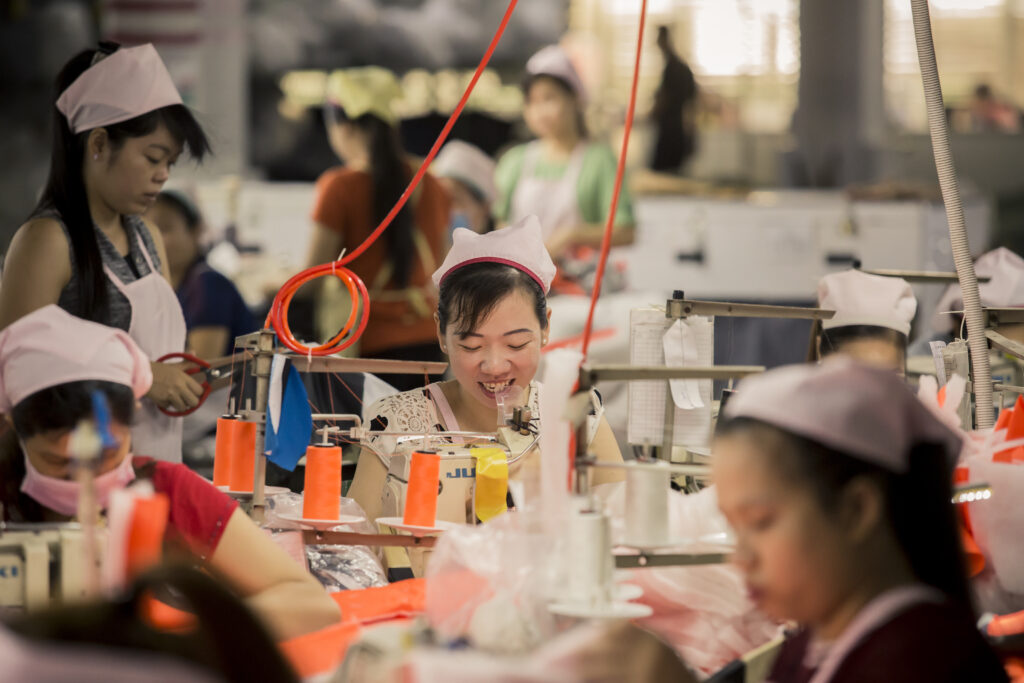
Improving inclusivity and the position of people in marginalised groups
Inclusivity for marginalised groups requires a good understanding of gender gaps and inequalities in communities. Our gender-based violence prevention training in Ho Chi Minh City aimed to improve this understanding among relevant community stakeholders, such as teachers, child protection workers and women’s union leaders. The training provided people at the community level with the knowledge and skills to address gender-based violence.
Migrants, their children and street children face particular challenges that can push children into child labour. To support them, we have sought to improve social protection services at the community level to ensure that no child is left behind. One example is our support for the establishment and maintenance of informal education for these children. Read more about the ways in which we helped strengthen education here.
To advocate for marginalised groups in the private sector, we have guided companies to develop non-discriminatory recruitment policies with an emphasis on gender sensitivity and inclusiveness. In particular, we have encouraged companies to implement children’s rights and business-related conditions such as family-friendly policies, including maternity protection, maternity/paternity leave and breastfeeding in the workplace.
Enforce relevant child-rights based laws and implement policies
On many issues, Save the Children’s community-based practices, materials and experiences have informed and provided practical examples for UNICEF to work and engage with the Government. In its WNCB activities, UNICEF works primarily with the Ministry of Education and Training, focusing on the link between education and the prevention of child labour.
Raising awareness on child labour and child rights
Before child rights-based legislation can be enforced and policies implemented, all stakeholders involved in child labour need to understand their roles and responsibilities. It is therefore essential to raise awareness of child labour and the link between education and the risk of child labour among all stakeholders. Throughout the programme, our partners argued that the Ministry of Education should play the same role in preventing and combating child labour as the Ministry of Labour, Invalid and Social Affairs.
Awareness raising takes many forms. For example, to raise awareness at government level, our partners have supported the institutionalisation of the definition of child labour and provided training on the definition and reporting of child labour, including support for a monitoring system of child-related and child labour indicators.
Another way we have raised awareness and understanding of child labour is through a child-led communication campaign at the national level, emphasising the importance of education.
Awareness raising is followed by action for children’s rights
Improving the national legal and policy frameworks
Through existing relationships and ongoing engagement with relevant ministries and officials, we promoted the realisation of children’s rights, focusing on the prevention of child labour and the protection of child workers. We promoted improvements in the national legal framework against child labour and the implementation of the national policy framework. In support of our objectives, we worked with government bodies (both national and local) to ensure a unified stance and approach to the elimination of child labour by all stakeholders.
We reviewed the implementation of the legal framework on child labour and shared our recommendations through policy briefs to government and National Assembly bodies, the Child Rights Working Group, the private sector, through the Children’s Forum and at national and sub-national events. We helped the government develop evaluation tools for the mid-term review of the national child labour programme. We also supported the Ministry of Education and Training in developing a circular on the role of counsellors in schools with formal counsellors and the key competencies required.
Throughout the programme period, we continued to support MOLISA by providing concrete guidance on the implementation of the amended Labour Code, which came into force in 2020 and brings Viennese labour legislation more in line with the Convention on the Rights of the Child (CRC), the International Labour Organisation (ILO) Minimum Age Convention (C138) and the ILO Worst Forms of Child Labour Convention (C182).
As another example of our work to improve national legal and policy frameworks, we have also supported the development of the National Programme for the Prevention and Elimination of Child Labour 2021-2025 with a Vision to 2030, in close collaboration with the ILO.
With new programme guidelines, our partners helped local governments in the WNCB programme areas of Dong Thap and Ho Chi Minh City to develop and implement local programmes on child labour. To ensure that a national policy framework with specific measures to prevent and respond to child labour is properly implemented, monitoring and evaluation are important. So we helped MOLISA develop a way to monitor how well the national child labour programme is working nationally and locally.
Throughout the programme period, we promoted a multisectoral approach. We encouraged different groups to work together by assigning roles and responsibilities to new stakeholders. These (new) stakeholders included the Ministry of Agriculture and Rural Development, the Ministry of Information and Communication, the Vietnam Chamber of Commerce and Industry and the private sector, in addition to the lead Ministry of Labour, Invalids and Social Affairs (MOLISA). Broad cooperation is needed to support proper policy implementation.
Improving social work and counselling services
Together with the Ministry of Education and Training, our partners have strengthened the staff in schools needed to improve social work and counselling services. Well-functioning services like these help prevent child labour and abuse.
To integrate child protection and social work into the school system, we worked closely with the Ministry of Education and Training (MOET). By providing technical support and sharing international good practice, we contributed to the development of national policies, guidelines and training programmes on child protection, child labour prevention and psychosocial support for students.
A good example of our policy advocacy on children’s services is working with MOET to develop a policy to establish school counsellors to provide psychosocial support to students. School counsellors are critical to strengthening the social service workforce to improve child protection, mental health care, psychosocial support and counselling for children and the prevention of child labour. We have advocated for the education sector to develop a legal basis for the deployment of school counsellors and their prescribed roles and required competencies.
Developing child protection protocols and handbooks for child social security services
Before we started our WNCB activities, there were no child protection protocols in schools, and certainly no protocols on how to identify the risk of children becoming involved in child labour, online exploitation or even sexual exploitation. This can lead to confusion as teachers and others do not know what to do when faced with such issues. So we helped the MOET develop protocols outlining child protection guidelines. We also developed training programmes, training materials and handbooks that are now used to identify children at risk of child labour, exploitation and more. Over the past few years, we have used these materials and helped train thousands of teachers across the country in the effective use of these protocols.
Some other ways in which we have enforced child-rights based laws and helped implement policies are:
- We contributed to the strengthening of the legal and policy framework for children’s social security services.
- We supported the government in finalising and implementing the roadmap to combat child labour.
- We provided technical assistance to the government to develop and train labour inspectors.
- We trained government officials on corporate social responsibility obligations.
- We have contributed to the development of legislation on child labour and the worst forms of child labour to better align with international child labour standards.
- We developed training for law enforcement and judicial officials on gender and child-sensitive investigation, prosecution and adjudication.
Multi-stakeholder approach in supply chains
Businesses need to address child labour issues and build capacity for human rights due diligence. They have an important role to play in protecting children and promoting responsible business practices. That is why we worked with many different groups, including companies, brands, consultants and government officials, to discuss child labour in supply chains. Through this multi-stakeholder approach, we aimed to foster collaboration and create an enabling ecosystem for responsible business practices. Training sessions, business conferences and consultations were some of the ways we brought these stakeholders together.
We found much evidence of child labour in manufacturing, particularly in textiles, garments and footwear, highlighting gaps in corporate, public and policymaker responsibility and accountability. That’s why we focused on raising awareness of children’s rights and promoting ethical labour practices among supply chain actors.
In addition to raising awareness, we focused on the prevention and elimination of child labour, working with government agencies to promote the protection and training of young workers throughout the country.
Examples of actions focusing on the private sector
Our work in the private sector aimed to reach and engage stakeholders throughout the supply chain, including the informal sector.
Our programme reached out to lower-tier enterprises within supply chains in Ho Chi Minh City and Dong Nai through capacity building sessions for business associations, enterprises and their lower-tier suppliers. These sessions focused on small and medium-sized enterprises in value chains in different sectors. Supply chain mapping activities were conducted to promote business engagement and address child labour risks with lower tier suppliers and service providers. We also provided training to business owners on communication skills and knowledge on child labour.
In factories, we conducted awareness-raising campaigns to promote children’s rights at work. Training on child labour inspection in project areas and provinces with high prevalence of child labour was also part of the strategy to reduce child labour in supply chains.
We work with the Vietnam Chamber of Commerce and Industry (VCCI) and other platforms to ensure that children’s rights are integrated into business practices. The VCCI and 160 companies, government agencies and other stakeholders participated in two business forums and formed a skills development network to improve employability and create decent job opportunities for young people. Through consultations during and after the various business training sessions, we provided technical advice to companies to improve their policies and procedures. When companies review and revise their internal policies, this leads to improved practices, which means better prevention, detection and remediation of child labour.
Examples of actions focusing on the public sector
Throughout the programme, we lobbied and advocated for government policies and regulations that promote responsible business practices. Our partners spoke to public and private groups to promote the Children’s Rights and Business Principles and other international standards such as the Convention on the Rights of the Child, ILO Conventions, the United Nations Guiding Principles on Business and Human Rights and the OECD Guidelines. This has helped to engage different stakeholders and partners at national, industry and supply chain levels.
We have helped to ensure that children’s rights are addressed in supply chains by providing advice to the National Action Plan on Responsible Business Practices, which was led by the Ministry of Justice and involves other United Nations agencies (such as UNDP, ILO, IOM and UNIDO) and country-specific government agencies.
Strengthen intersectoral coordination and collaboration for supporting communities
Strengthened intersectoral coordination between relevant ministries, sectors, agencies and organisations will contribute to the prevention and reduction of child labour. This strategy is interwoven with all the strategies mentioned above. Intersectoral coordination and cooperation is essential for holistic efforts to raise awareness and change child labour norms and practices.
Intersectoral coordination means engaging a wide range of stakeholders in dialogue. For example, in four districts in Dong Thap and four districts in Ho Chi Minh City, we worked in partnership with their People’s Committees and other relevant authorities, such as the Ministry of Labour, Invalids and Social Affairs, the Ministry of Education and women’s trade unions. These partnerships helped us to comprehensively address child labour awareness, norms and practices in these districts.
We supported case management guidance to help local Child Protection Committee members protect and respond to child labourers and children at risk, and keep them in school. Our partners also carried out extensive communication sessions aimed at a holistic awareness-raising strategy targeting small and household enterprises, including the informal sector. The design and implementation of empowerment initiatives also involved stakeholders such as parents, caregivers, local authorities and civil society organisations.
With the help of the Vietnam Chamber of Commerce and Industry (VCCI), which represents the business community and is also a key link between government and business, we effectively brought the voices and perspectives of business to policymakers on responsible business and sustainability. At the same time, we facilitated government interaction with business stakeholders to raise awareness and promote children’s rights in business.

